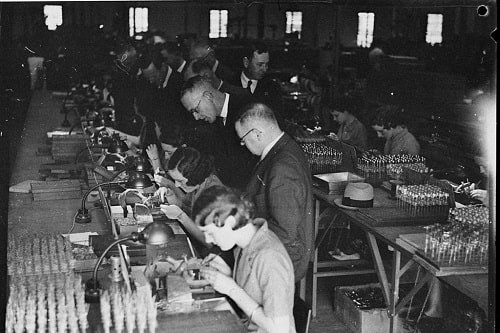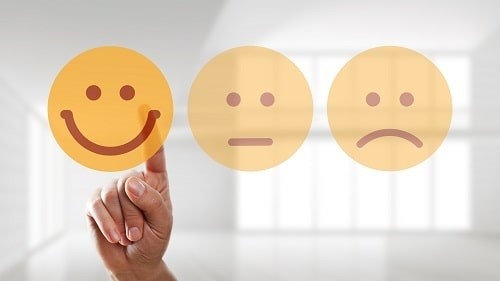It’s true that the juggernaut that is the wellbeing industry seems unstoppable, growing by 12.8 per cent in the past two years. Workplace wellness, which includes everything from gym membership schemes to therapy dogs, yoga and nutritional workshops, is growing too.
Features
Happy returns: how wellbeing became big business
According to the Global Wellness Institute, a US-based not for profit organisation, firms spent USD 48 billion on it in 2017 and the sector is set to surpass USD 66 billion (£51 billion) by 2022. How did it get to this point and what does it mean for our wellbeing, not least, for the ways in which the health and safety sector is expected to take on its new wellbeing responsibilities?
From Hippocrates to ONS
Despite the buzz, wellbeing as a concept is incredibly old. We get our definitions from the ancients. The Ancient Greek physician Hippocrates is thought to have been the first doctor to focus on preventing sickness instead of simply treating it, and he saw the role played by diet, lifestyle and environmental factors. Aristotle also wrote about ‘eudaemonic wellbeing’, an expression connected to notions of a ‘life well lived’, as well as joy and the absence of anxiety.
The workplace wellness industry is set to surpass £51 billion by 2022Our modern ideas of wellbeing in the workplace borrow much from these, blending notions of physical and mental wellbeing. The Office for National Statistics (ONS) uses four indicators: life satisfaction, happiness, anxiety and a sense of purpose in life, to measure national wellbeing.
The British Safety Council’s 2018 literature review, Not Just Free Fruit. Wellbeing at Work puts it thus: “Wellbeing at work is here to stay. It means physical, emotional and mental health.”
Such are the current definitions of wellbeing, which stretch back. However, its history in the world of work has surprisingly old beginnings too. It’s helpful to look at these to put the current trend for workplace wellbeing and its associated market of products and services in context.
Early experiments
It’s almost certain that the eccentric philosopher and social reformer, Jeremy Bentham, would have been fascinated by today’s wellbeing technology. He died in 1832, after spending his life working on the science of happiness and how it could be measured. He conducted experiments on the pulse rate as an indicator of wellbeing, and left instructions for his body to be preserved – in fact you can still see him in a glass case kept in University College London.
Bentham believed that there was an objective reality of wellbeing, which only analysis via calculation and instruments could unlock. As William Davies describes in his book, The Happiness Industry: How government and big business sold us wellbeing (published in 2015): “This opens the way for experts to grasp or describe that reality, given the sufferer himself cannot, and for numbers to represent such feelings on the assumption words cannot.” The fitbit, Apple watch and all number of apps all trace their beginnings back to Bentham.
It was in the 19 century, which saw rapid advances in the steel, electric and automobile industries, that attention was really turned to the workplace, and how better health and resilience could translate to greater productivity. Anson Rabinbach, author of The Human Motor: Energy, Fatigue and the Origins of Modernity (1992) writes of: “elaborate tracing instruments; the ergograph, the aesthesiometer” which were invented to register minute changes in the course of fatigue during any given occupation or task.
Rabinbach writes: “By the late nineteenth century, scientists in Europe had thoroughly investigated diverse aspects of fatigue such as work performance, mental fatigue, workers’ diet and nutrition…Extensive studies on fatigue were used to calculate and conserve the productive capital of the nation.”
Psychoanalysis and the workplace
By the 1920s came the birth of psychoanalysis, and with it a fresh interest in work’s impact on mental health. Elton Mayo, an Australian polymath, created the ‘Hawthorne effect’ principle after his experiments at the Hawthorne works in Illinois showed how improvement in workers’ conditions such as lighting, breaks and what we’d now term worker engagement, brought success for the business. Davies writes: “The lessons Mayo drew from his repeated visits to the plant was that managers had to learn how to talk to their employees if they wanted to extract greater productivity from them.”
 Experiments on factory workers in the 1920s showed how improvement in workers’ conditions such as lighting and breaks improved productivity.
Experiments on factory workers in the 1920s showed how improvement in workers’ conditions such as lighting and breaks improved productivity.
He sums up: “Whenever we now hear that managers must now focus on the ‘whole person’, or that employee happiness is critical to the bottom line…we are witnessing Mayo’s influence.”
As work has become more mental and less physical, the tide has turned to a new and more complex understanding of wellbeing. Studies carried out on civil service workers in 1967 and 1977 (the Whitehall study) led to the discovery that stress produces the hormone cortisol which can trigger a heart attack. Researchers working in the early sixties at the University of Michigan wrote about how power structures can impact on the health of employees.
Today, there is an amazing amount of research on wellbeing at work. Of course, the industry that services our growing understanding of workplace wellbeing has become more complex too – wellbeing agencies now specialise in active working, anger management, or even laughter therapy.
Wellbeing as industry – why now?
We can appreciate that there have been thinkers and mavericks dabbling in the world of workplace wellbeing for over 200 years now. But they were outsiders and radicals. It’s now a massive industry. What’s driven the change?
 Data on how we feel and think, which we freely share on social media, can be harvested for the purposes of selling new wellbeing products to us
Data on how we feel and think, which we freely share on social media, can be harvested for the purposes of selling new wellbeing products to us
Matthew Holder, head of campaigns at the British Safety Council, who has made free wellbeing videos with advice for employees, thinks it’s down to data. He says: “The explosion of the social media industry and the dawn of the Selfie age has encouraged all of us to freely give data about our lives, our feelings and what we are doing.
“This massive amount of personal data is given to large tech companies who can then sell this to new players in the wellbeing industry. This can be harvested for the purposes of building and selling new wellbeing products
to us.”
Data can also be used to improve people’s wellbeing and performance and to devise interventions that have an economic rationale and end. Instead of coal and steam, data is our new, prized raw material and companies and employers are extracting it and using it for a variety of economic reasons.
A complicated consumerist mess?
This is also becoming reflected in how we talk about it and promote it and for some people this is a problem. Writing in the Guardian on 2 January, GP Margaret McCartney says: “Rather than wellbeing being straightforward (don’t smoke, don’t drink too much, do exercise you like, eat a variety of foods, with lots of vegetables and little processed stuff, see people and do things) the industry has created its own mythology. Wellbeing is presented as complicated, complex, difficult to achieve correctly and best when purchased – all while requiring gurus to access it. This entanglement of industries makes what should be straightforward – a healthy lifestyle – into a complicated consumerist mess.”
Opportunity for health and safety
In health and safety, perhaps there’s an opportunity to do things differently. Rather than be led into the murky world of wellbeing and finance, academics writing for The Society of Occupational Medicine in their December 2019 paper, the Value of Occupational Health to Workplace Wellbeing argue that the wellbeing argument needs to be based on “core business values, and the fit of a health and wellbeing programme with those values”.
Case studies showed that those who got the most support for their wellbeing ideas and initiatives, were the professionals who aligned their ideas with the organisation’s strategy and business objectives. This included at a firm of accountants, who – surprising given the firm’s speclialism – gained support for wellbeing initiatives by focusing on the firm’s strategic imperative, which was employer retention and attractiveness.
“The actual argument for change was ‘what kind of employer are we; how do we look after our people?’ And then you get a change where senior partners are leading mindfulness initiatives, so it changes from a very skeptical to a much more engaged senior management,” summarised report co-author Professor Kevin Daniels, speaking to Safety Management.
From past to present
We have a responsibility to learn from the past when it comes to workplace wellbeing and to question how things are done. The obsessive target-driven culture in Amazon’s warehouses that GMB union has called “Victorian working practices” doesn’t sound a million miles away from the Victorian factory experiments on fatigue, when the goal wasn’t to make workers well at all, only to make them well in order to produce more units of cloth or coal. Wellbeing can be an end to pursue because it’s the right thing to do.
There is also much to celebrate and be hopeful about. In the marketisation of wellbeing we have more choice, and more freedom to decide what works for us. As individuals, we can pursue these, but the health and safety sector has a clear role in helping to shape an organisation that supports wellbeing and productivity.
As organisational psychologist, Professor Sir Cary Cooper said at our recent workplace wellbeing debate (see video below): “What annoys me more than anything is the mindfulness training at lunch, sushi at your desk and all that sort of garbage. Wellbeing is really a strategic issue and the good news is that more and more companies treat wellbeing as such. They are looking at their line managers and flexible working. They are considering the full package.”
FEATURES

Sedentary working and how to combat the ‘sitting disease’
By Gavin Bradley, Active Working on 05 April 2024
Prolonged and excessive sitting poses a major risk to our health, but the Get Britain Standing campaign and On Your Feet Britain Day on 25 April are a great way of encouraging workers to sit less and move more.

Company culture and wellbeing: a crucial link
By Bex Moorhouse, Invigorate Spaces on 05 April 2024
Investing in measures to support worker wellbeing will be ineffective unless the company culture genuinely incorporates values like teamwork, involvement, flexibility and innovation.

Office design and culture: happier and healthier staff – or the opposite?
By Guy Osmond, Osmond Ergonomics on 03 April 2024
Applying ergonomic principles to workstation set-ups and ensuring the physical environment supports neurodivergent people are just some of the ways of creating an office where everyone can thrive, but a supportive and positive organisational culture is vital too.


